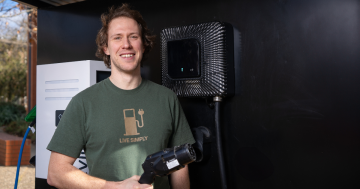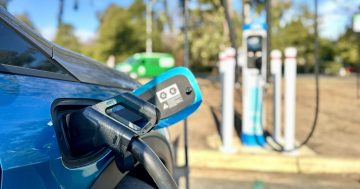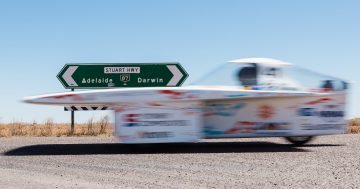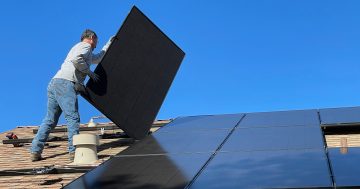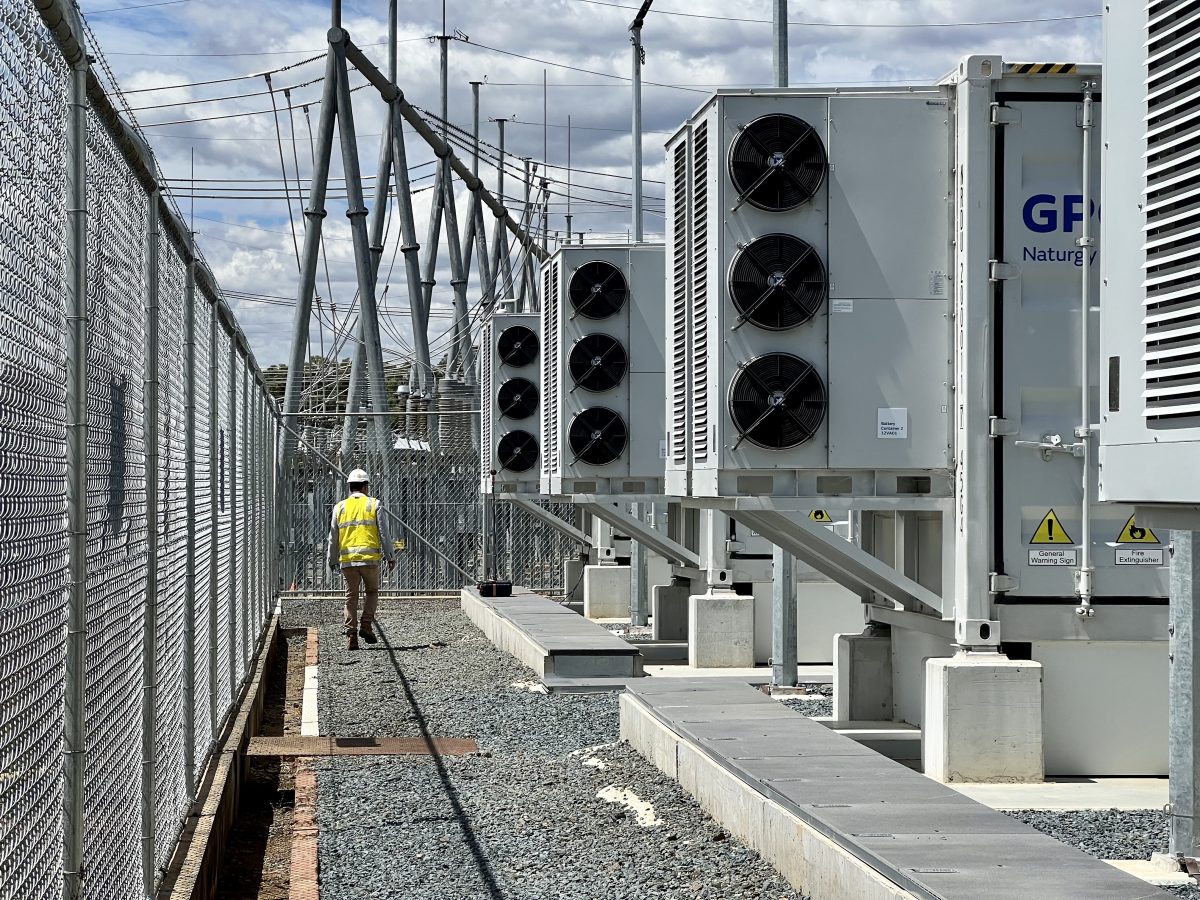
Canberra’s first grid-scale battery facility is in Beard, on the ACT border with Queanbeyan. Photo: James Coleman.
A team of researchers from the Australian National University (ANU) is on a mission to work out exactly how the ACT Government can arrive at its vision for net-zero emissions by 2045.
Headed by Dr Bin Lu and Associate Professor Marnie Shaw from the ANU College of Engineering, Computing and Cybernetics, the year-long project will look at how much energy the region will need and where it could come from to make up for the shortfall in fossil fuels.
Dr Lu says the recommendations to the government will be intensely practical and focused.
“We will do the research suburb by suburb to understand the geographic distribution of our energy resources.”
The ACT Government has undertaken similar studies and published results in August 2022 in the Powering Canberra report, which found retail gas prices are expected to increase by around 19 per cent by 2029 as more households swap their gas connections for electric. The annual gas bill will rise by $220 for the average household.
Over the same period, household electricity bills are expected to drop by 3 per cent, driven by energy efficiency improvements and “declining costs from the ACT’s large-scale Feed-in Tariff scheme”.
By 2045, when the ACT is forecast to reach net-zero emissions, demand for electricity is expected to be up 21 per cent, with 26 per cent delivered through rooftop solar panels.
But the transition will require significant investment in storage, including electric car batteries, neighbourhood batteries and hot water storage.
“We’ll also aim to develop Geographic Information System (GIS)-based maps of these resources, which will shed light on the geographic distribution of Canberra’s distributed energy storage resources,” Dr Lu said.
The ANU joined forces with Evoenergy, Nissan, Jetcharge, SgFleet and Accenture two years ago as part of a project jointly funded by the Australian Renewable Energy Agency (ARENA) and the ACT Government to find out exactly how EV batteries could support the grid.
Dubbed ‘Realising Electric Vehicles to Grid Services’ (or REVS), a fleet of 51 Nissan Leaf vehicles were connected to chargers that allowed electricity to flow both ways (between the car and the grid) as peaks rose and fell.
“This trial demonstrated that fleet EVs could play a vital role in supporting our energy grid and in boosting energy security,” Minister for Energy and Emissions Reduction Shane Rattenbury declared in March 2023.
“In the future, we hope this can extend to Canberrans’ privately owned electric vehicles, providing EV owners with the opportunity to send energy stored in their car’s on-board battery back into their own homes or the electricity grid.”
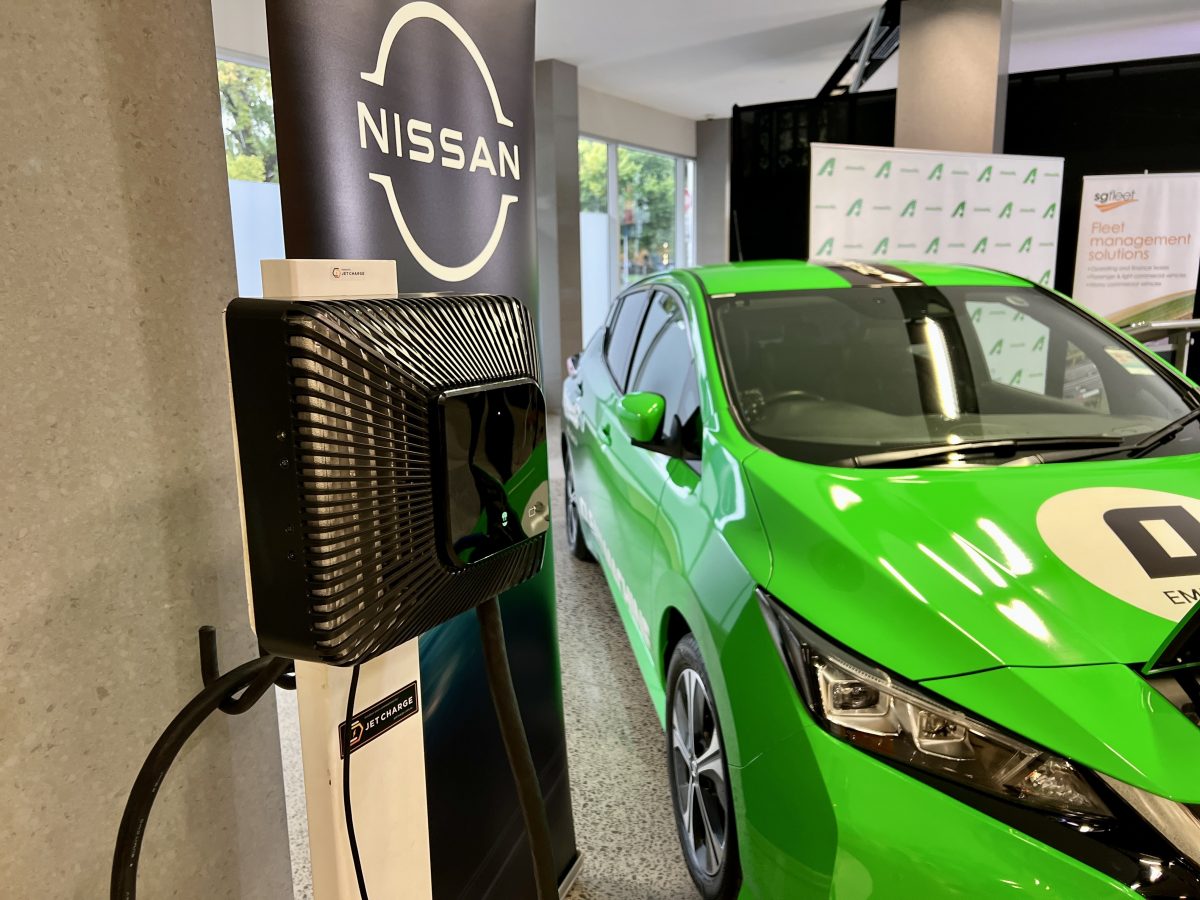
The Nissan Leaf is the only fully electric vehicle with V2G capabilities available in Australia right now. Photo: James Coleman.
In April, the ACT Government also signed off on a new 250-megawatt (MW), 500-megawatt-hour (MWh) battery energy storage system (BESS) to be constructed in Williamsdale, south Tuggeranong, by Eku Energy.
It’s expected to cost between $300 and $400 million and offer enough capacity to power one-third of Canberra for two hours during peak demand periods.
The focus of the ANU’s research might be Canberra, but Dr Lu says there are national lessons to be learned.
“Canberra is a national leader in the renewable energy transition,” he says.
“Things are happening much faster here than the rest of Australia. Our target – net zero by 2045 – is five years ahead of the national target, so there’s a real opportunity for the rest of the states and territories to learn from the ACT’s experience.”
The research was funded by the 2023 Icon Water and ActewAGL Endowment Fund.












